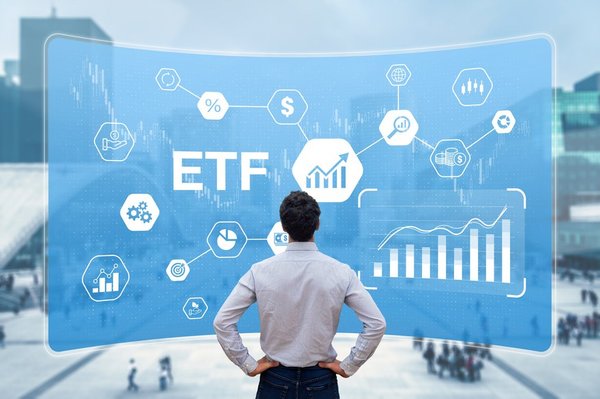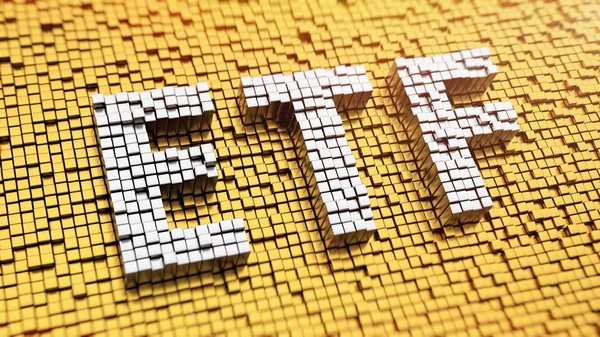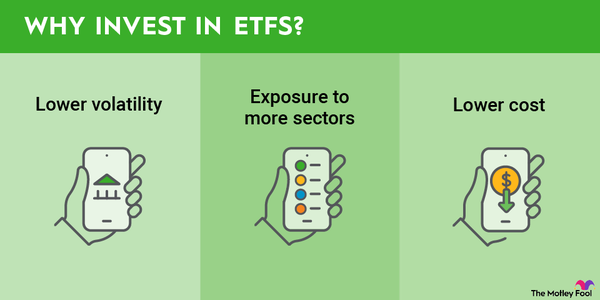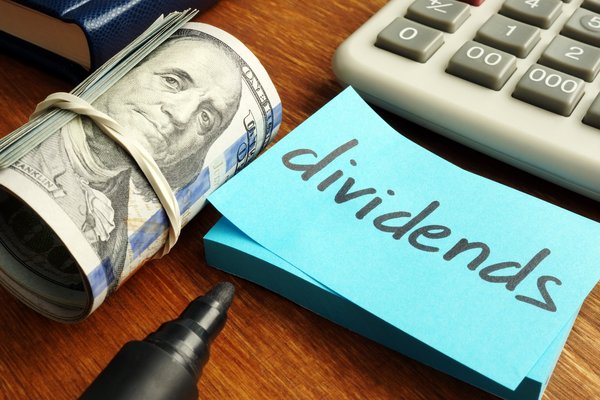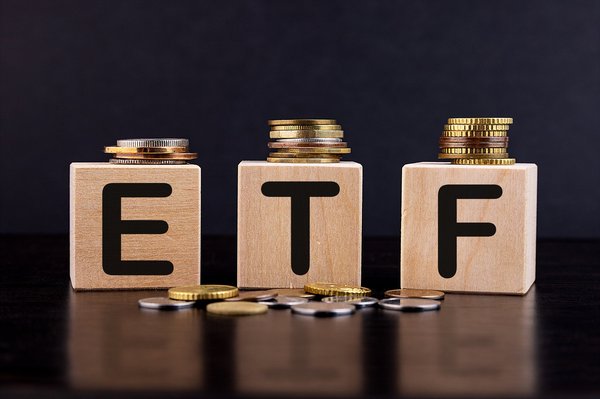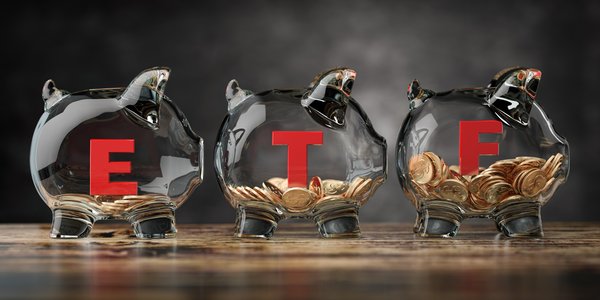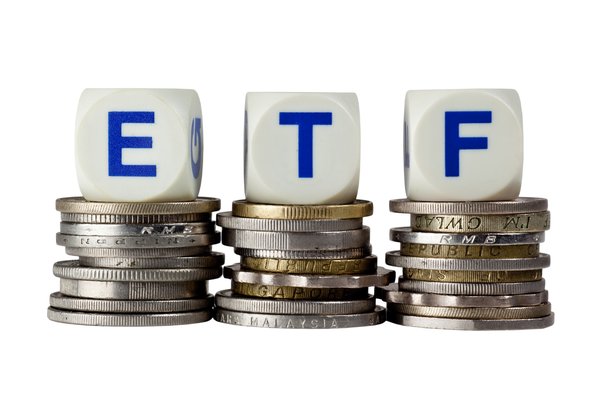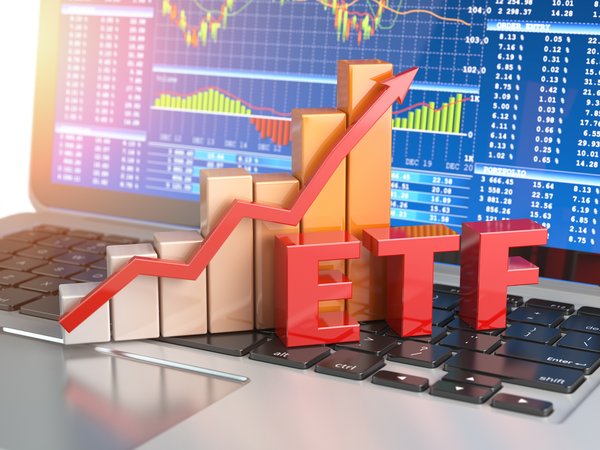The iShares Core S&P 500 ETF (IVV 0.88%) is one of the largest exchange-traded funds (ETFs) in the U.S. Let's explore why this fund is so popular and how you can incorporate it into your wealth-building portfolio.
What is it?
What is the iShares Core S&P 500 ETF?
The iShares Core S&P 500 ETF is an index fund that replicates the S&P 500 (SNPINDEX:^GSPC). The S&P 500 index contains 500 of the U.S.'s largest public companies, representing all 11 economic sectors. To be invited into this group, index members must meet size, liquidity, and profitability requirements. And if their business fundamentals deteriorate later, they can also be removed from the index.
Exchange-Traded Fund (ETF)
The iShares Core S&P 500 ETF provides investors easy access to these premier U.S. stocks. Because the fund's portfolio matches the composition of the S&P 500, shareholders can obtain exposure to all S&P 500 stocks with a single share.
The quality of the S&P 500 portfolio makes this ETF a good fit for both novice and experienced investors. While all stocks carry risk, S&P 500 companies tend to be more stable and resilient than smaller businesses. Based on historical index performance, this fund will rise and fall with market cycles in the short term but should generally trend upwards over time.
The iShares Core S&P 500 ETF is not the only S&P 500 ETF available, but it is one of the more popular. The fund's net assets total about $454 billion, making it the second-largest S&P 500 ETF, after the SPDR S&P 500 ETF Trust (SPY 0.91%). Both funds hold the same stocks, but the iShares Core S&P 500 ETF has a lower expense ratio.
ETF Expense Ratio
The iShares Core S&P 500 ETF is run by BlackRock (BLK 1.33%), the world's largest investment manager. BlackRock operates all iShares funds, plus LifePath target-date funds and others.
How to buy
How to buy the iShares Core S&P 500 ETF
The steps for investing in any ETF, including the iShares Core S&P 500 ETF, are as follows.
Step 1: Open a brokerage account
You can buy iShares Core S&P 500 ETF shares within a standard brokerage account or investing app. Many traditional IRAs and Roth IRAs will also have access to this fund.
If you are eligible for traditional IRA or Roth IRA contributions, there are tax advantages to buying the iShares Core S&P 500 ETF within those accounts. Both account types defer taxes on dividends and capital gains. The deferral allows you to keep more money invested and working for you.
When shopping for a new investing account, pay close attention to the fees for account maintenance and trading. Fees sap your wealth-earning power over time, so it's best to keep them as low as possible.
Once the account is open, remember to transfer funds into your new account so you're ready to begin trading. Typically, you'd link a checking or savings account and transfer the money digitally.
Step 2: Figure out your budget
The most reliable way to create wealth in the stock market is to invest regularly and continually. To do that, you need a budget. Ideally, you'd establish a monthly allotment to invest every month.
That allotment should not affect your ability to cover your living expenses and fund your emergency account. If a cash flow crisis prompts you to sell shares prematurely, it will stifle your account growth and may create unnecessary losses. That's why it's so important to establish a sustainable investing budget.
Experts recommend investing 10% to 15% of your income for your long-term financial goals, including retirement. If those percentages aren't realistic today, start with something lower and look for opportunities to invest more over time.
Step 3: Do your research
Whether you are interested in the iShares Core S&P 500 ETF or another asset, research is an important step. You should know and understand the investment you're buying. Look into the fund's history, holdings, and management team.
For index funds, it's also wise to review the fund's tracking error. Tracking error is the difference between the fund's returns and the performance of the underlying index, in this case, the S&P 500.
Generally, the best ETFs lag their index by not much more than the fund's expense ratio. You'd expect the expense ratio to reduce the fund's returns because funds have administrative expenses, while indexes do not. However, if the tracking error is much higher than the expense ratio, there could be a problem with the fund's ability to execute its strategy.
The iShares Core S&P 500 ETF's tracking error varies between 3 and 5 basis points, depending on the timeframe. This is acceptable, given the fund's expense ratio of 0.03%.
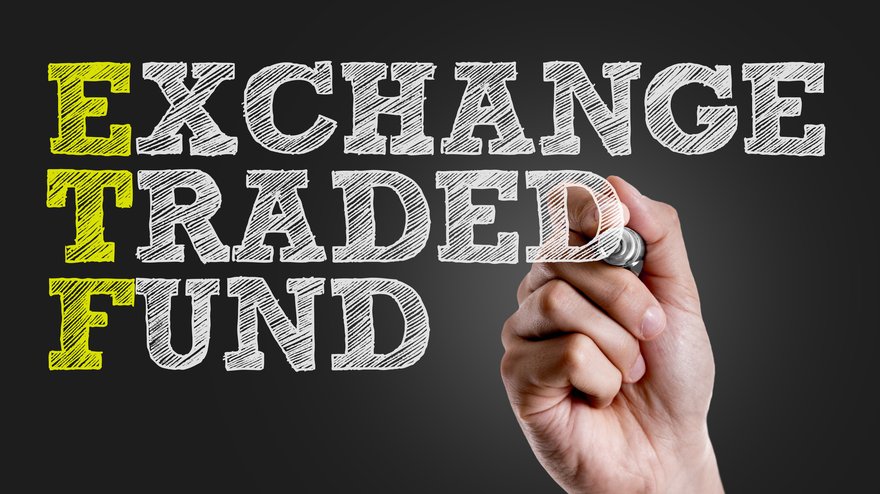
Step 4: Place an order.
Many brokerage and retirement accounts offer easy, web- or app-based investment trades. The process is straightforward: You usually state how many shares you want to buy and tap a button to confirm the order. Optionally, you can specify other parameters, such as the maximum per-share price you're willing to pay.
Plan for diversification
The iShares Core S&P 500 ETF is a large-cap equity fund that's diversified by stock and sector. You can add another layer of diversification by adding a different type of asset to your portfolio. It's common to pair large-cap stocks with a smaller position in Treasury debt, for example. Treasury bills and bonds provide stability, particularly during turbulent market cycles.
Holdings
Holdings of the iShares Core S&P 500 ETF
The iShares Core S&P 500 ETF holds 503 stocks in its portfolio, representing 500 companies. The numbers of stocks versus companies differ slightly because Alphabet (GOOGL 0.23%)(GOOG 0.23%), Fox Corporation (FOX 0.72%)(FOXA 0.47%), and News Corporation (NWSA 1.0%)(NWS 0.72%) have multiple share classes in the index.
The table below shows the iShares Core S&P 500 ETF's top 10 holdings and their respective sectors.
| Company Name (Ticker | Sector |
|---|---|
| Microsoft (NASDAQ:MSFT) | Information technology |
| Apple (NASDAQ:AAPL) | Information technology |
| Nvidia (NASDAQ:NVDA) | Information technology |
| Amazon (NASDAQ:AMZ) | Consumer discretionary |
| Meta Platforms (NASDAQ:META) | Communication |
| Alphabet Class A | Communication |
| Alphabet Class C | Communication |
| Berkshire Hathaway Class B (NYSE:BRK.B) | Financials |
| Eli Lilly (NYSE:LLY) | Health care |
| Broadcom (NASDAQ:AVGO) | Information technology |
Almost 30% of the iShares Core S&P 500 ETF's holdings operate in information technology. The next-largest sector is financials, at 13%, followed by healthcare and consumer discretionary, at 12% and 10%, respectively.
Sector ETFs may be a better fit if you prefer a more targeted portfolio than the iShares Core S&P 500 ETF.
Should I invest?
Should I invest in the iShares Core S&P 500 ETF?
If you agree with the five statements below, the iShares Core S&P 500 ETF likely suits your investment style and needs.
- You aren't trying to beat the market. The fund will rise and fall with the market. It won't outpace the market, but it won't lag by much, either.
- You plan to buy and hold. This is an asset you'd buy and hold indefinitely, with the goal of generating wealth over time. This fund is not a candidate for quick profits and heavy trading.
- You believe the U.S. economy will grow over the long term, and you have time to wait. The S&P 500 is viewed as a proxy for the U.S. economy. If you believe U.S. companies will continue creating value, as they have historically, the iShares Core S&P 500 ETF is one of the best long-term ETFs out there. For context, the S&P 500 delivered an average annual gain of almost 8% between 1957 and 2023, including dividends and net of inflation. (It was expanded in 1957 to include 500 companies.)
- You can handle some volatility. Volatility is an unavoidable aspect of equity investing, even with S&P 500 companies. For example, the index dipped 22% in 2022 and then gained 26% in the following year. The good news is that those ups and downs have always averaged out to gains over time. You will see similar cycles as a shareholder in the iShares Core S&P 500 ETF. The key is to stay invested long enough for the good years to outweigh the bad ones.
- You prefer low-maintenance, high-quality investments. An S&P 500 ETF like this requires less oversight and maintenance than a portfolio of individual stocks. You don't have to watch the headlines for every S&P 500 stock because a single index member is unlikely to take down the whole group. Also, S&P 500 companies that deteriorate will eventually be removed from the index and replaced with more qualified companies. Those changes will flow through to all funds tracking the index, ensuring portfolio stocks remain high quality.
Dividends
Does the iShares Core S&P 500 ETF pay a dividend?
The iShares Core S&P 500 ETF pays a dividend, currently yielding 1.37%, according to the 30-day Securities and Exchange Commission (SEC) yield formula. The formula represents the dividends collected in the most recent 30 days after fund expenses. The dividend payouts are in March, June, September, and December.
A 1.37% dividend yield is acceptable but not compelling. You'd invest in the iShares Core S&P 500 ETF more for the long-term appreciation potential than the dividend. The best dividend ETFs can deliver yields of 2% or more.
Expense ratio
What is the iShares Core S&P 500's expense ratio?
The fund's expense ratio is 0.03%, representing $3 for every $10,000 invested annually. This is the lowest expense ratio available among S&P 500 ETFs. Competing fund family Vanguard does offer a similar fund with the same 0.03% expense level. There is also an S&P 500 mutual fund from Fidelity with a lower expense ratio of 0.015%.
ETFs and mutual funds differ in the timing of trade settlement. ETFs trade throughout the day like stocks, while mutual funds settle all transactions once daily.
Historical record
Historical performance of the iShares core S&P 500 ETF
The table below shows the iShares Core S&P 500 ETF's average annual total returns over different periods as of March 31, 2024. Note that total return includes appreciation and dividend reinvestment. The fund's shareholders who didn't reinvest dividends during these periods would have seen lower returns.
| Timeframe | Average Annual Total Return |
|---|---|
| One year | 29.85% |
| Three years | 11.46% |
| Five years | 15.02% |
| 10 years | 12.92% |
| Since inception (2000) | 7.50% |
These returns are comparable to the S&P 500, deviating by no more than 5 basis points. As the numbers indicate, investors have seen exceptionally strong average returns from these large-cap U.S. stocks over the last 10 years.
Related investing topics
The bottom line on the iShares Core S&P 500 ETF
The iShares Core S&P 500 ETF provides low-cost access to the U.S. stock market's largest, most successful companies. Given the S&P 500's history of long-term growth, this fund is a good pick for the buy-and-hold investor who can stay patient during occasional market weakness. That patience will be rewarded with solid wealth production over time.
FAQ
Investing in iShares Core S&P 500 ETF FAQ
How do I invest in the iShares Core S&P 500 ETF?
You can invest in the iShares Core S&P 500 ETF by placing a trade order within your brokerage account or IRA.
Is the iShares Core S&P 500 ETF a good investment?
The iShares Core S&P 500 ETF is a good investment for people seeking market-level returns from established, successful U.S. companies. This fund is less suitable for heavy traders and investors who intend to beat the market.
What is the ticker for the iShares Core S&P 500 ETF?
The ticker for the iShares Core S&P 500 ETF is IVV.
What is the average return of the iShares Core S&P 500 ETF?
Since its inception in 2000, the iShares Core S&P 500 ETF has produced an average annual return of 7.5%. In the last 10 years, the fund's average annual return has been 12.92%.









